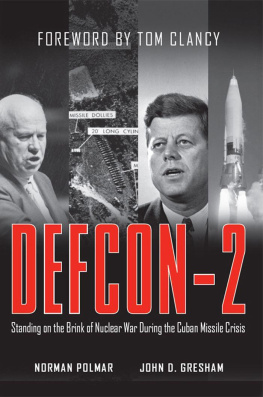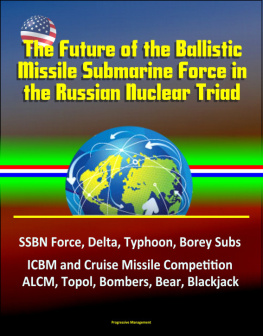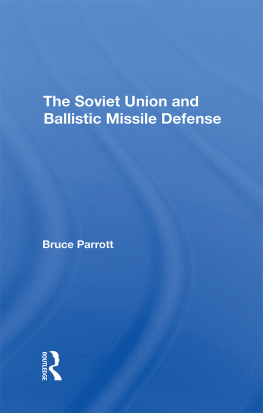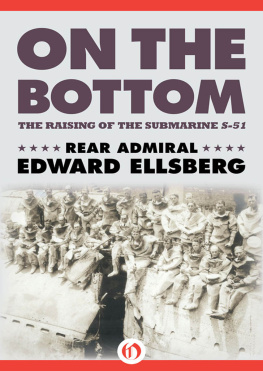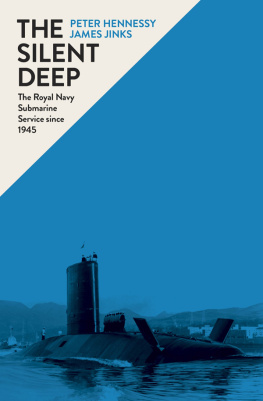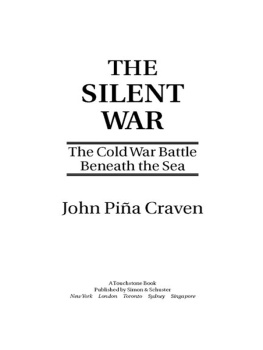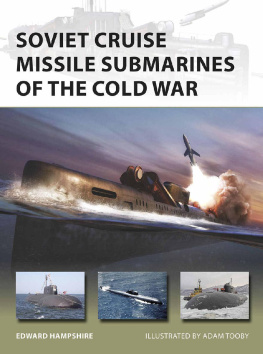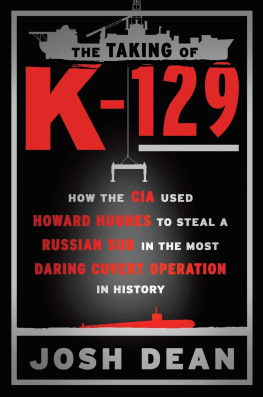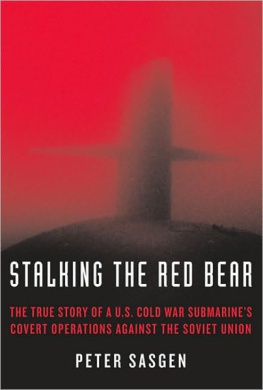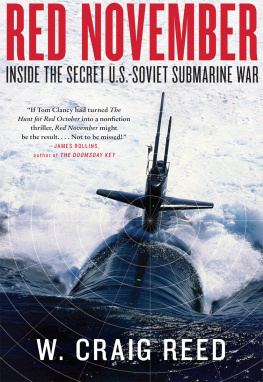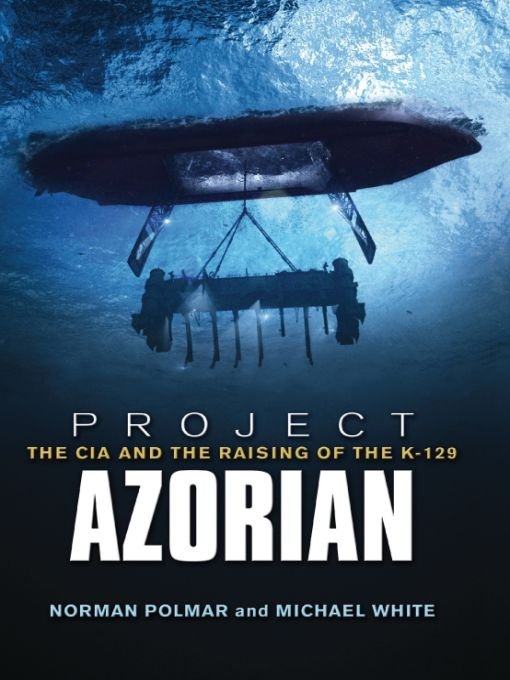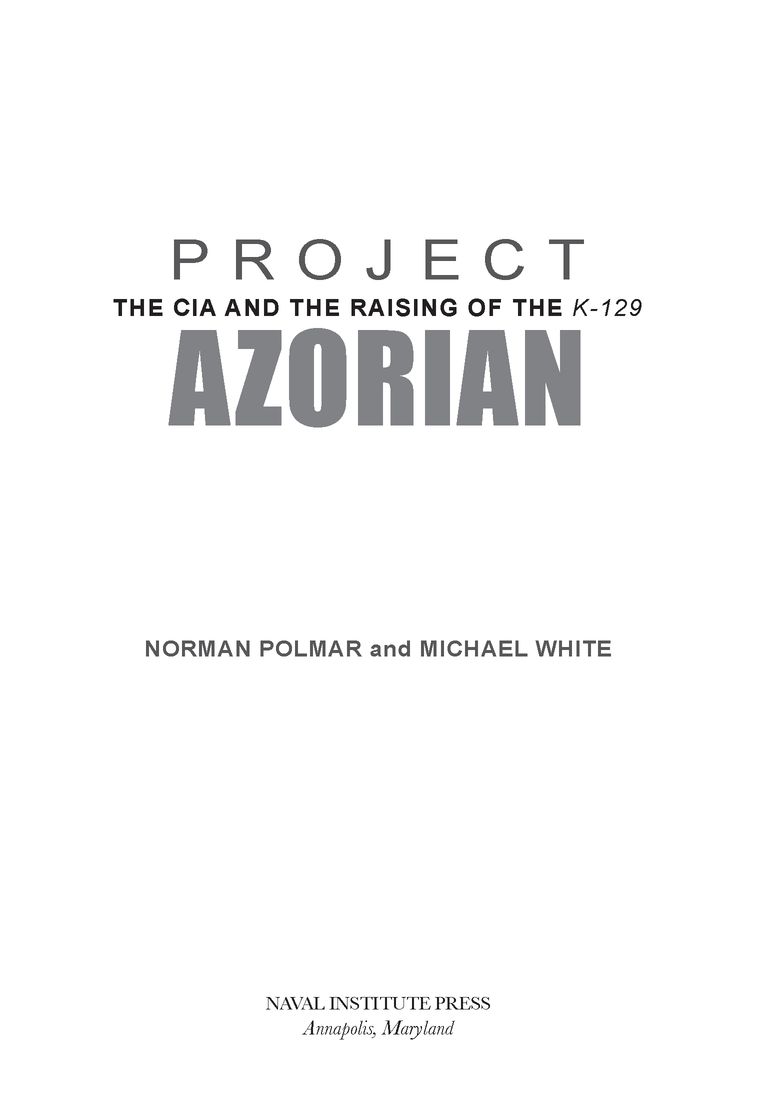Table of Contents
Dedicated to the
Parents, wives, and children
of the Officers and Enlisted Men
Lost in the submarine K-129.
Liberty cannot be preserved without a general knowledge among the people. Let us dare to read, think, speak, and write.
John Adams
PERSPECTIVE
If you go back there it would mean war. Those words, spoken by a Soviet naval officer, demonstrated the concern of Soviet officials as they learned that the Central Intelligence Agency had salvaged partand possibly allof a Soviet ballistic missile submarine. The CIA had in fact raised a portion of the sunken missile submarine K-129, using a cover story that actually attracted world-wide attention, and undertaken with Soviet ships closely watching the lift ship without knowing that the salvage operation was underway.
During the first week of August 1974 a portion of the wreckage of a Soviet ballistic missile submarine was raised three miles, from the ocean floor up into the hull of a U.S. salvage ship. Although only a 38-foot section of the submarine K-129 was recovered, Project Azorian was unquestionably the most ambitious and the most audacious ocean engineering effort ever attempted.
The engineering challenge was to recover an object, estimated to weigh up to 2,000 tons, from more than 16,000 feet. Previously, the only object known to have been picked up from such a depth was a satellite package, or bucket, recovered by the U.S. Navy bathyscaph Trieste II on April 25, 1972. That object weighed several hundred pounds. And, prior to Project Azorian, the deepest ocean salvage of a ship was the raising of the U.S. submarine Squalus from a depth of 245 feet off the New England coast in 1939.
The Trieste II recovery and the Squalus salvage effort were undertaken in the open, with the latter being reported in real time in the press. Even though the Trieste II effort was not publicized, the necessity for surface support by the floating dry dock White Sands and an ocean-going tug made it obvious that a deep recovery operation was under way.
Project Azorian was carried out under intensive press scrutiny because the cover for the salvage was a seafloor-mining project sponsored by the notorious Howard Hughes. Thus, the salvage of the K-129, besides being of unprecedented scope and depth, was conducted in the public view and with intensive Soviet naval surveillance and with the Soviet Embassy in Washington, D.C., having been previously notified by an anonymous source that the United States was planning to salvage a submarine.
The story of Project Azorianincorrectly called Project Jennifer in the presshas been told and retold in the press and in books since it was first publicly revealed in February 1975. However, this book contains the accurate account of the location and salvage of the remains of the K-129, with details that have never before been revealed in the open literature. It is the first published account to be based on interviews with key participants in Project Azorian, official documents not previously available, extensive commentary by Soviet naval officers directly involved with the K-129, and photographs and other illustrations not previously seen in the open press. Perhaps most significant, this book explains for the first time information derived from analysis of the actual acoustic signals received from the events causing the sinking of the K-129, which were recorded by a U.S. Air Force hydrophone system in March 1968.
Although Project Azorian occurred more than three decades ago, U.S. law makes it a criminal offense to out a secret agent, i.e., to identify him or her using the persons real name. Accordingly, we have avoided linking codenames to real names of the undercover CIA officials and operatives involved in Project Azorian activities although they were made available to us by many of the participants and appear in reports provided to us.

The authors have sought to avoid abbreviations, acronyms, and jargon to the extent possible. Technical and naval terms are explained when first used. Three terms used extensively throughout the book are
Sail: The upper appendage or fairwater of a submarine. The sail structure replaced the conning tower of earlier submarines, which was a watertight compartment placed on top of the hull, usually serving as the attack center. There is a small bridge atop the sail, with the structure serving as a streamlined housing for periscopes, masts, and snorkel induction tube; in some submarines the forward diving planes are mounted on the sail. It is also called bridge fairwater (i.e., a streamlined structure to support the bridge); it is called fin in the Royal Navy.
Snorkel: An air intake tube that can be raised from the sail to permit the operation of diesel engines in a submerged submarine (operating at periscope depth). This permits the recharging of batteries to enable fully submerged operation with electric motors.
Project Numbers. Beginning in 1936 all Soviet ship designs were assigned a sequential project number. The first, i.e., Project 1, was the large destroyers of the Leningrad class; the first submarine design was Project 6, the Dekabrist class. In this scheme Project 629 was the diesel-electric ballistic missile submarine class beginning with the submarine K-96 (originally designated B-92). The K-129 was of this class. A major design change would add a suffix letter such as 629A, or the letter M for modified. Not knowing most Soviet project numbersand those acquired mostly were from highly classified sourcesthe North Atlantic Treaty Organization (NATO) navies established their own submarine designation scheme that was alphabetical, with phonetic words assigned to Soviet submarines. Thus, Project 629 had the NATO designation Golf, and the modified Project 629A had the designation Golf II.
Norman Polmar
Michael White
ACKNOWLEDGMENTS
The authors are in debt to many individuals who have helped us with this project, several of whomwith regretcannot be publicly acknowledged at this time. First and foremost, we are in debt to Martin and Maura Bollinger for their encouragement and their support of this project.
Throughout the writing of this book, as well as during production of the documentary film Azorian: The Raising of the
K-129, we have benefited from a team of experts that provided peer reviews of our work and was an invaluable source of information. The team consisted of
Thomas J. Dougherty, PhD, technical story analyst.
Lee J. Mathers, former naval intelligence briefing officer in the Pentagon.
Bruce Rule, for 42 years the leading acoustics analyst for the Office of Naval Intelligence. Rules analyses of acoustic data determined the cause of the loss of the submarines Thresher in 1963 and Scorpion in 1968.
Other individuals who have provided assistance or were interviewed for this effort are listed below; asterisks indicate persons interviewed for the film Azorian whose interview transcripts also were used as sources for this work. H.G.E. indicates individuals who were aboard the


